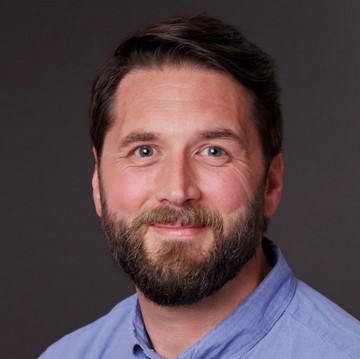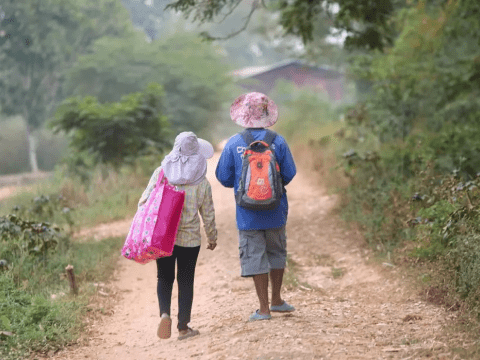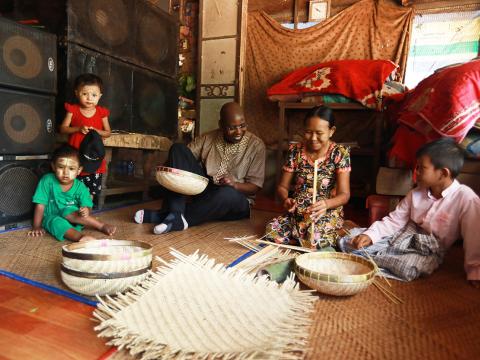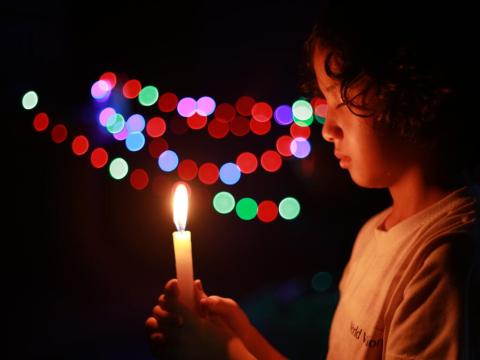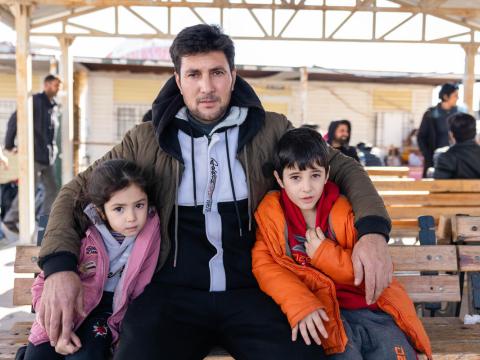
Not all refugees are rushing to return to Syria
Maurice Sadlier explains that just because Syria is "free" doesn't mean refugees will head home... yet.
“Welcome to free Syria,” one of our fellow travellers loudly declared as we passed through the fourth passport checkpoint crossing the border from Türkiye to Syria on Wednesday morning.
While the border between the two countries had started to open gradually following the devastating earthquake that hit south-eastern Türkiye and north-western Syria in February 2024, it is only since the Syrian government changes in December 2024 that it has been possible for international visitors to cross into Northwest Syria. So, after a plethora of form-filling, signatures, and approvals at various levels, we found ourselves crossing the Bab al-Salama border post into Syria. This was the first opportunity to visit projects we have been implementing with support from the Irish Government for the majority of the horrific conflict that gripped Syria for almost 14 years.
Over the week, I have heard people talk about the events of the 8th December 2024 in various ways - the collapse of the Assad regime, liberation day, freedom, the new Syria – all positive and all loaded with hope for the future. Unfortunately, the new government will need a lot more than hope to rebuild the country. The cost of reconstruction is estimated to cost up to US$500 billion.
Earlier in the week, walking around the city of Gaziantep in Türkiye, which has been home to many UN and NGOs who work in Northwest Syria, I fell into conversation with Syrian refugee Muhammed. He had moved here in 2014 and had set up a market stall selling jewellery and curios, and was happy to talk about his life. Was he going to return to Syria? I asked him, “Not yet,” was the answer, his son is attending college here, and if he returned to his home in Aleppo that would be the end of his son’s education. In any case, he had no home or business to return to, “Assad and Russia had bombed them all”. Muhammed showed me videos he had taken of his home and shop in Aleppo when he visited back in February – all piles of rubble. He was able to return temporarily because of the Turkish government’s pragmatic “go and see” policy. The policy allows one member of each Syrian householder to make three “go-and-see” visits in six months, which allows refugees to assess the situation in their home community and make an informed decision about moving home.
“Not yet,” was also a common answer when asked in the IDP camps we visited. People like Fatima, originally from Aleppo and living in a camp in A’zaz for the last 10 years, is waiting for the right time to go home. Fatima is enrolled in one of World Vision’s Vocational Training programmes, and while the income from the hair dressing she now does will help her family's income and put food on the table, it will take a long time to save to rebuild her house.
There are around 7.4 million internally displaced people within Syria, with two million IDPs living in more than 1,500 displacement camps and other informal settlements in north-western governorates. Its proximity to the border, and hence safer from bombing, means A’zaz district is home to many of these IDP camps. This was very evident on the short drive from the border to Sijjo camp, with tents and temporary structures on all sides nestled in between the ubiquitous olive groves. Sijjo camp is home to approximately 11,000 households, the majority of whom are women and children. As of August 2024, 80% of internally displaced people across Syria were women and children.
People are leaving the camps, we are told, but most are returning once they see the situation in their home villages, as there is simply nothing there. People’s homes, schools, and health centres are all gone. Life in the IDP camps is in itself bleak, and bleaker still since aid budget cuts. Services previously funded by donors, such as water supply and waste management, are no longer provided. But there is still more available in the camp than there is in most of the communities.
There is an expectation that once the school year is finished in a few weeks, there will be more movement of people. And we are told that people are being encouraged by authorities to move home, but some believe it will take up to 2 years for the camps to be emptied. The hard-nosed opinion is to stop providing services in the camps and invest it in the community, incentivising people will move. This sounds logical, but impractical in the medium term, as the transition from camp to home will take time and money.
Rebuilding Syria and the lives of the Syrian people will require investment, support, and time, but like the many Syrians I met this week, we remain hopeful that a brighter future for all here is possible.
Maurice Sadlier is Programmes and Policy Director at World Vision Ireland. Follow him at @MauriceSadlier
